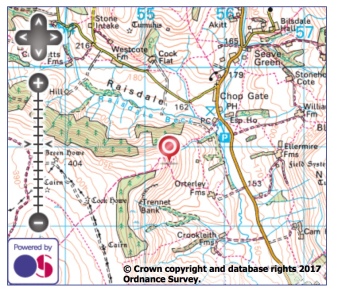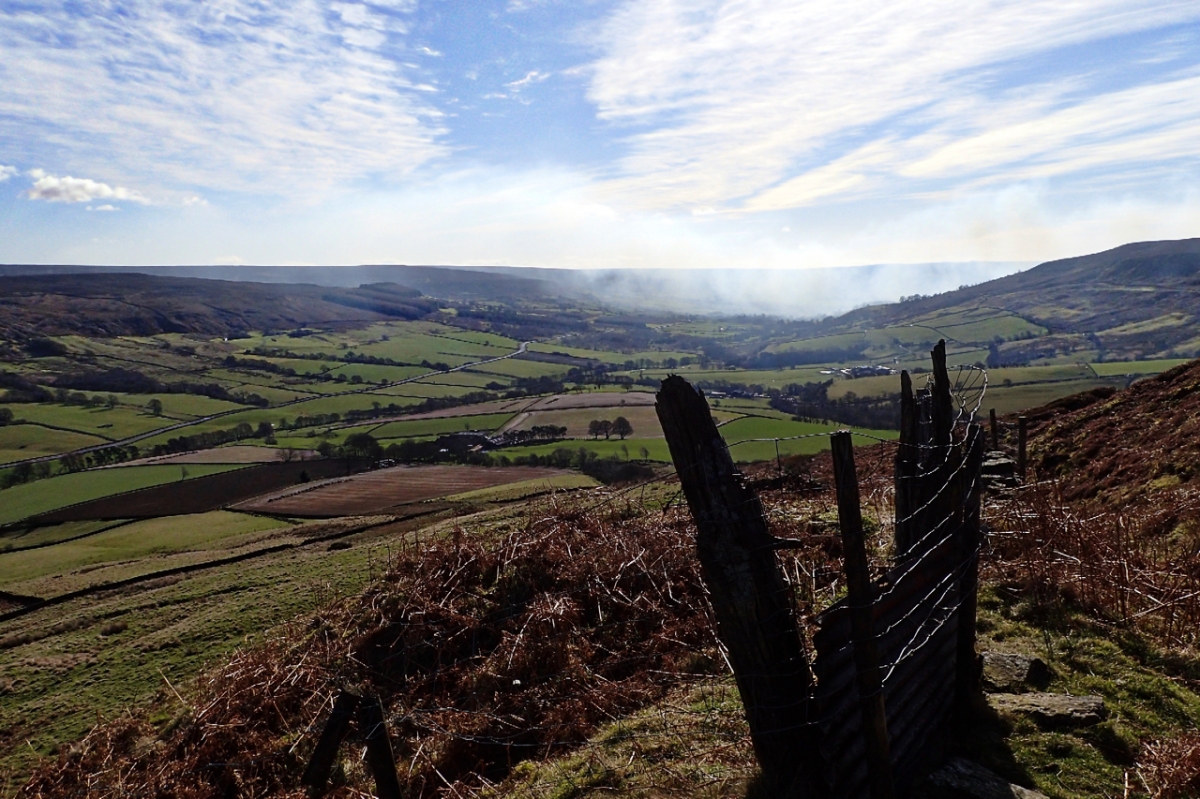From Trennet, above Chop Gate. A tranquil scene with glorious blue skies marred by the smoke of heather burning on Bilsdale West Moor. Heather burning is a practice carried out for the sole purpose of increasing the density of Red Grouse breeding on the peat moors. In its wake it carries the risk of complete incineration of whole ecosystems of invertebrates and small mammals, reduces peat formation and water and carbon storage and increases rain run off and dissolved organic carbon in streams and rivers. Of course there are regulations to control burning. The “season” is from 1 November to 31 March for one thing and the smoke should not be likely to damage health or cause a nuisance for another but the amount of burning of our moorlands has increased. The Committee on Climate Change found that:
“The area of burned moorland has increased significantly in recent decades across much of northern England. A comparison of aerial photography from the 1970s and 2000 of over 200 km2 of the English uplands found that the extent of new burns had doubled (from 15% to 30%) over this period. A recent study found that the annual number of burns between 2001 and 2011 increased by 11% per year, with an accelerating trend in more recent years.”
And all so the maximum number of Red Grouse can be killed which we, as taxpayers, are probably subsidising to the tune of £56 per hectare per year as an agricultural subsidy.

